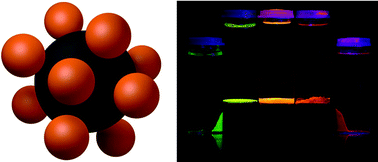Nanosized luminescent superparamagnetic hybrids†
Abstract
The combination of fluorescent and magnetic properties in single nanosystems is of current interest for applications in the biomedical and biological sciences, including

* Corresponding authors
a
Centre for Strategic Nano-fabrication, The University of Western Australia, 35 Stirling Highway, Crawley, WA, Australia
E-mail:
swaminatha.iyer@uwa.edu.au
Fax: +61 8 6488 7330
Tel: +61 8 6488 4470
The combination of fluorescent and magnetic properties in single nanosystems is of current interest for applications in the biomedical and biological sciences, including

 Please wait while we load your content...
Something went wrong. Try again?
Please wait while we load your content...
Something went wrong. Try again?
C. W. Evans, C. L. Raston and K. S. Iyer, Green Chem., 2010, 12, 1175 DOI: 10.1039/B925531A
To request permission to reproduce material from this article, please go to the Copyright Clearance Center request page.
If you are an author contributing to an RSC publication, you do not need to request permission provided correct acknowledgement is given.
If you are the author of this article, you do not need to request permission to reproduce figures and diagrams provided correct acknowledgement is given. If you want to reproduce the whole article in a third-party publication (excluding your thesis/dissertation for which permission is not required) please go to the Copyright Clearance Center request page.
Read more about how to correctly acknowledge RSC content.
 Fetching data from CrossRef.
Fetching data from CrossRef.
This may take some time to load.
Loading related content
